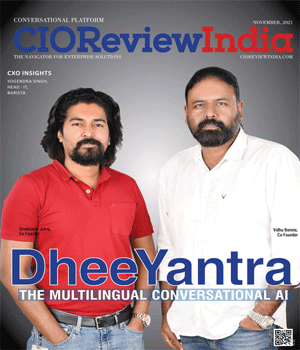
How Innovation is Redefining Brand Protection Strategies in Consumer Goods
Vishal Pathak, Content Writer | Wednesday, 22 January 2025, 07:20 IST
 Consumer goods companies are now facing sophisticated counterfeiting, parallel trade, and supply chain vulnerabilities. Innovation has become the cornerstone of modern brand protection strategies, reshaping how businesses secure their reputations, products, and consumers.
Consumer goods companies are now facing sophisticated counterfeiting, parallel trade, and supply chain vulnerabilities. Innovation has become the cornerstone of modern brand protection strategies, reshaping how businesses secure their reputations, products, and consumers.
The New Age of Counterfeiting: Why Traditional Methods Fall Short
Counterfeiting isn’t what it used to be. Today, counterfeiters leverage advanced technologies like 3D printing and sophisticated distribution networks to replicate authentic goods almost indistinguishably. The rise of e-commerce has further complicated detection, providing counterfeiters with global reach.
Traditional methods, such as holograms or basic serial numbers, often lack the robustness to counter these modern threats. They’re either easily replicated or insufficient in tracking products across complex supply chains. This gap underscores the need for innovative solutions that stay ahead of counterfeiters.
AI-Powered Solutions: Smarter Detection and Prevention
Artificial Intelligence (AI) is proving to be a game-changer in brand protection. Machine learning algorithms analyze vast datasets to identify counterfeit patterns, flagging suspicious activities with unparalleled speed and accuracy. These systems can monitor e-commerce platforms, identifying counterfeit listings in real time.
Beyond detection, AI also predicts potential vulnerabilities in supply chains. By analyzing historical data, AI-powered solutions enable companies to take proactive measures, significantly reducing the risk of counterfeits entering the market.
Blockchain Technology: Enhancing Transparency and Traceability
Blockchain is redefining supply chain security. This decentralised ledger technology ensures every product’s journey, from raw materials to the consumer’s hands, is transparent and immutable. Each transaction is recorded in real-time, creating an unalterable history that verifies product authenticity.
For consumers, blockchain offers a powerful tool for reassurance. With just a QR code scan, they can access a product’s complete journey, reinforcing trust in the brand while deterring counterfeiters. Acviss’s Origin, powered by blockchain, helps businesses track and trace products throughout their supply chains, providing real-time data to ensure every product is genuine and reaches the right consumer.
Non-Cloneable Labels: Unique Fingerprints for Products
Non-cloneable labels, powered by advanced nanotechnology or AI-generated patterns, create a unique “fingerprint” for every product. These labels are impossible to replicate, providing an added layer of security.
When combined with digital verification systems, these labels allow consumers and retailers to verify product authenticity instantly. This not only safeguards the brand but also builds consumer trust by empowering them to participate in the fight against counterfeits. Acviss’s Yellow Label taps the multi-layered approach of authentication. This ensures customers can verify the product seamlessly with zero possibility of getting scammed.
The Role of IoT in Brand Protection
The Internet of Things (IoT) is another frontier in brand protection. Smart tags equipped with IoT sensors can monitor a product’s condition, location, and handling throughout its lifecycle. Any deviation from predefined parameters triggers alerts, ensuring that tampered or counterfeit goods are intercepted.
IoT-enabled devices also provide real-time data for manufacturers, allowing for better inventory management and faster responses to emerging threats. The integration of IoT with other technologies like blockchain creates a robust ecosystem for brand protection.
 E-Commerce Monitoring: The Digital Battleground
E-Commerce Monitoring: The Digital Battleground
With e-commerce being a major channel for counterfeit goods, monitoring online marketplaces has become a critical component of brand protection. Advanced software tools now scan thousands of listings daily, identifying unauthorized sellers and counterfeit products.
Brands can act swiftly by leveraging these tools, ensuring takedowns happen before significant damage occurs. Collaboration with e-commerce platforms further strengthens this approach, creating a united front against counterfeiters.
Consumer Awareness: The First Line of Defense
Innovation isn’t limited to technology; it also involves engaging consumers. Educating consumers about the risks of counterfeits and how to verify authentic products empowers them to make informed choices. Interactive campaigns, such as gamified verification apps, make the process engaging and impactful.
When consumers are equipped with knowledge and tools, they become active participants in safeguarding the brand. This shift not only deters counterfeiters but also strengthens brand loyalty.
Why Collaboration Across the Ecosystem is a Neccessity!
Brand protection is no longer a solo effort. Manufacturers, suppliers, retailers, and even competitors are coming together to combat counterfeiting. Industry consortiums and standards, such as the Global Product Authentication Standard (GPAS), foster collaboration and innovation.
By sharing data and insights, these partnerships create a unified front that is harder for counterfeiters to penetrate. Collaborative efforts also ensure that innovations are scalable and adaptable to the unique challenges of different industries.
Future Trends: The Road Ahead for Brand Protection
The future of brand protection lies in the convergence of technologies. AI, blockchain, IoT, and non-cloneable labels will increasingly work in harmony, creating an integrated approach that leaves no room for counterfeits.
Advancements in quantum computing and digital twin technology promise even greater possibilities. As these technologies mature, they’ll open new frontiers for securing the integrity of consumer goods and maintaining consumer trust.
Innovation as a Catalyst for Trust
The stakes in brand protection have never been higher. In a world where consumer trust is paramount, innovation is not just an option—it’s a necessity. By embracing cutting-edge technologies and fostering collaboration, companies can not only safeguard their products but also enhance their reputation and build lasting relationships with consumers.
As the landscape evolves, staying ahead requires vigilance, adaptability, and a commitment to leveraging innovation. After all, protecting a brand isn’t just about securing products; it’s about preserving the trust and loyalty that make a brand thrive.
CIO Viewpoint
Gen AI: Transforming Cloud Solutions for...
By Matt Yanchyshyn, VP - AWS Marketplace & Partner Services, AWS
Upcoming Technological Advancements in Payments...
By Pinak Chakraborty, CIO of Airtel Payments Bank
Shaping the Future of AI: Talent, Innovation,...
By Yann LeCun, Chief AI Scientist at Meta
CXO Insights
The Future of Intelligence: Adapting to AI,...
By Rajesh Pant, Chairman of the Cyber Security Association of India
How Data Science is shaping the Future of...
By Manish Panjwani, CTO, Shriram Automall
Revolutionizing Manufacturing: The Synergy of...









.jpg)
.jpg)
.jpg)









